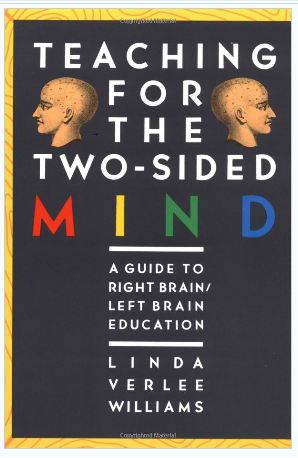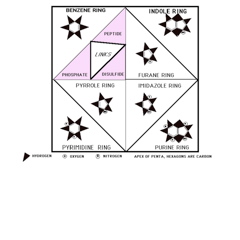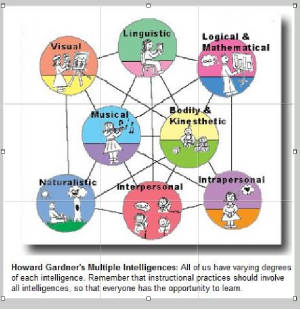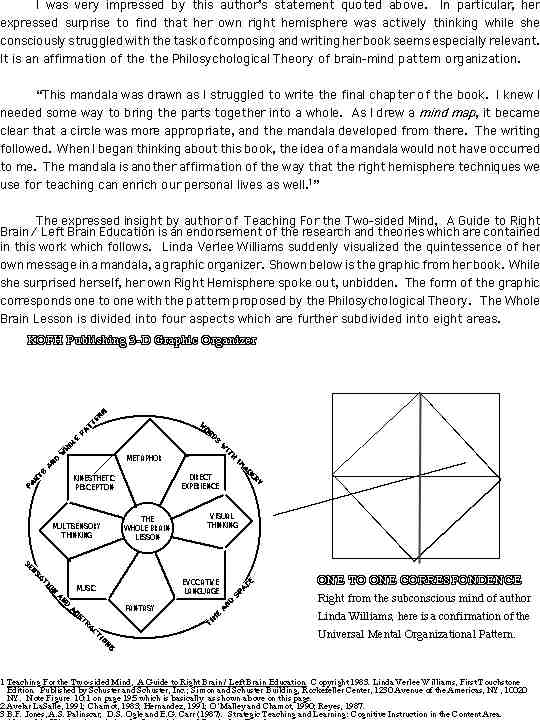|
|
 |
|
The first consideration is Student Learning Style
Thinking is a Right and Left Hemisphere process, but a preference for one side more than the other creates
different perspectives in the student body. The mental mix makes each person more dominant in one of
the eight facets of intelligence found in us all. Teachers can reach out to all students by using lessons that
come in four basic patterns called Learning Style Lessons.
Science News
Words, Gestures Are Translated By Same Brain Regions
Science Daily (Nov. 9, 2009) — Your ability to make sense of Groucho's words and Harpo's pantomimes in an old Marx Brothers
movie takes place in the same regions of your brain, says new research funded by the National Institute on Deafness and Other
Communication Disorders (NIDCD), one of the National Institutes of Health.
Scientists have known that sign language is largely processed in the same regions of the brain as spoken language. These regions
include the inferior frontal gyrus, or Broca's area, in the front left side of the brain, and the posterior temporal region,
commonly referred to as Wernicke's area, toward the back left side of the brain. It isn't surprising that signed and spoken
language activate the same brain regions, because sign language operates in the same way as spoken language does -- with its
own vocabulary and rules of grammar.
Current thinking in the study of language is that, like a smart search engine that pops up the most suitable Web site at the
top of its search results, the posterior temporal region serves as a storehouse of words from which the inferior frontal gyrus
selects the most appropriate match. The researchers suggest that, rather than being limited to deciphering words alone, these
regions may be able to apply meaning to any incoming symbols, be they words, gestures, images, sounds, or objects. According
to Dr. Braun, these regions also may present a clue into how language evolved.
"Our results fit a longstanding theory which says that the common ancestor of humans and apes communicated through meaningful
gestures and, over time, the brain regions that processed gestures became adapted for using words," he said. "If the theory
is correct, our language areas may actually be the remnant of this ancient communication system, one that continues to process
gesture as well as language in the human brain."
(source)
|
 |
|
Graphic Organizers and Learning Styles:
The Graphic Organizers use the "Lotus Leaf," i.e.; folded pages, as organizer to frame the text of the entire curriculum,
K-12. By virtue of the repeated graphic organization, these Graphic Organizers become a device by which to engage teachers
in Interdisciplinary Instruction. When two or more teachers use the same Graphic Organization in presenting the different
cognitive material, reinforcement in the students' mind and a connection between what was learned in one classroom with that
from another takes place, de facto.
What a wonderful break in the traditional English classroom it can be for the teacher to pass out photocopies
of the eight (two-sided or 16) templates in this booklet and assign a session of hands-on cutting, folding, and highlighting
the pages, When the student has completed all of the 24 lesson sessions, these pages will have become a Lotus Leaf Book Report
on the whole course of English Grammar, to include all the topics covered throughout the year.
In her book, "Teaching for the two sided Mind," the author surprised herself in that she involuntarily come to
realize that a graphic organization of all the things she had used a thousand words to explain could be seen in pictorial
format.

|
| (Click for more information) |
Teaching For the Two-sided Mind,
A Guide to Right Brain/Left Brain Education.
Copyright 1983. Linda Verlee Williams, First Touchstone Edition. Published by Schuster and Schuster, Inc.; Simon
and Schuster Building, Rockefeller Center, 1230 Avenue of the Americas, NY, 10020 NY.
Linda William's mandala to the right, took the form of a pretty, eight-petal, leaf inside of a circle. But, it is essentially
the same organization as the graphics used in these lessons plans. The reason that these fixed groupings of the cognitive
material, across the whole K-12 curriculum, can be repetitively organized this way is unclear, at first. That it can
be done is a fact, De facto, since these lesson plans at this site show it can be done. The implication is that
our mind is a pattern seeking device which already has evolved a specific pattern it seeks to fill. Perhaps this is
the best definition of Whole Brain Learning, i.e.; Whole Brain Learning is the process of filling all the empty spaces
in the mind's ready and tailored pattern of organization,
Below is a Graphic Organizer of the Genetic Chemistry forming Nucleotides with organic ring shaped molecules:
| (Graphic below is link to" The Genetic Code") |

|
Compare the Graphic Organization used above with Linda William's mandala. The two
are basically the same in form. What seems so true is that science and mathematics tend to collect concepts into sets and
groups the same way we have found that things fit containers better when they come in dozens or eights.
|
 |
|
|
|
 |
|
Everyone is smart but in their own way!

|
| (graphics are links to more information) |
Behavioral improvement in the classroom has been studied with noted improvement. This has been
attributed essentially to the required physical involvement, i.e.; Hands-on folding and cutting activity. Nevertheless, it
is suspected that the learning style of many students have previously been ignored in a lesson's plan. Those students respond
behaviorally because the Graphic Organization has improved the meaning of the lesson.
Evidence of such an observation was a personal experience as explained in the author's own note and last words
in her book "Teaching for the Two-Sided Mind, A guide to Right Brain Left Brain Education."
From her own book, below,... note Figure 10:1, on page 195, which is basically one form
of the Lotus Leaf organization used throughout all our published products:

|
 |
|
|
|
|
|
|
|
 |

